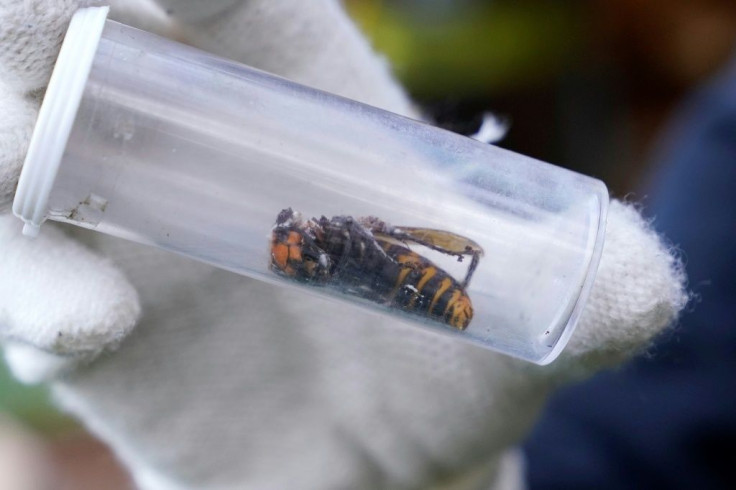Will 'Murder Hornets' Resurface? Washington, Canada Teaming Up Against The Invasive Species
KEY POINTS
- The first "murder hornet" nest in the U.S. was destroyed in October last year
- Authorities are still working to eradicate the invasive species
- Citizen science plays an important role in the effort
Amid concerns about a possible resurgence of "murder hornets," U.S. agencies are teaming up with Canadian authorities to eradicate the invasive species.
Asian giant hornets, nicknamed "murder hornets," made headlines last year after they were sighted in Washington. By October, experts were able to destroy the first known murder hornet nest in the U.S. But the Washington State Department of Agriculture (WSDA) had warned that it was "not the end of the story."
Earlier this week, Doug Yanega, a scientist from Entomology Research Museum in California, told the New York Post that the species could be back when the weather begins to warm up in the spring.
The WSDA announced Monday that the state is teaming up with Canada's British Columbia and other U.S. federal agencies to eradicate Asian Giant Hornets in the Pacific Northwest, adding that the species "ignore international borders."
The hunt for the Asian giant hornet notched a major victory, but lessons @WSDAgov learned in 2020 will be put to use again in 2021 as scientists try to track and eradicate the invasive honey bee predator. https://t.co/C67nyynikw pic.twitter.com/OONW4JgREg
— Good Fruit Grower (@goodfruitgrower) March 16, 2021
The initiative includes steps to track, trap and eradicate the invasive species. They will also seek the public's help to set-up murder hornet traps and to collect information about possible sightings.
"Reports from the public have been critical for locating Asian giant hornets," the WSDA said. "Last year, half of the confirmed reports in Washington and all of the confirmed reports in British Columbia were from members of the public."
Potentially destructive to pollinators
Oregon State University (OSU) released a report to help members of the public learn more about Asian giant hornets and identify them. It includes photos of "murder hornets," as well as other commonly confused species such as the Western Yellowjacket and the Great golden digger wasp.
This is because the Asian giant hornets didn't exactly get the nickname for harming humans.
"They're not the murderous insects of horror movies that come through the cracks and take your kids away," Andony Melathopoulos, of OSU's College of Agricultural Sciences, said. "They're not even as aggressive as yellow jackets that hang around your backyard barbecue. Unlike yellow jackets, the hornets don't fly around the picnic table trying to get at your food, but rather stick close to forest edges."
Instead, it poses a serious threat to honeybees, which account for $20 billion of the country's annual crop production, the university noted. Because of the Asian giant hornets' potentially destructive impact on the pollinators, it's important for citizen scientists to familiarize themselves with the species so that they can report any sightings to the authorities.
"The public is a big part of making sure the hornet remains contained," Melathopoulos said. "They should take a minute to familiarize themselves with it by using the Extension publication and keep their eyes peeled for possible hornet introductions into Oregon."
People should be "extremely careful" while trying to photograph the species as their sting can be very painful, Melathopoulos added.

© Copyright IBTimes 2025. All rights reserved.






















